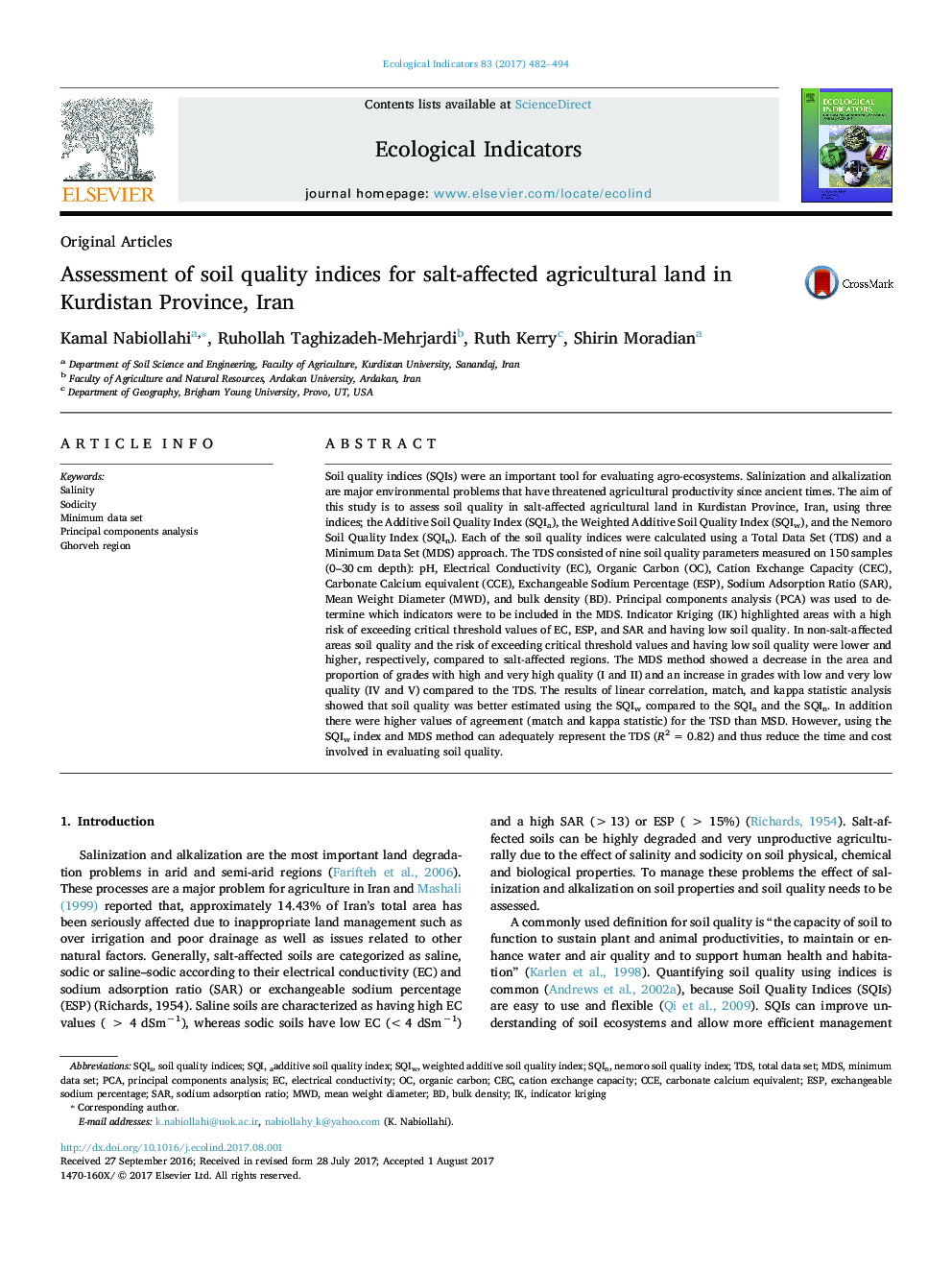| کد مقاله | کد نشریه | سال انتشار | مقاله انگلیسی | نسخه تمام متن |
|---|---|---|---|---|
| 5741517 | 1617119 | 2017 | 13 صفحه PDF | دانلود رایگان |
- Soil quality of salt-affected agricultural land in Kurdistan Province, Iran, was assessed using three indices; the Additive Soil Quality Index (SQIa), the Weighted Additive Soil Quality Index (SQIw), and the Nemoro Soil Quality Index (SQIn).
- Three soil quality indices (SQIa, SQIw, and SQIn) were calculated using a Total Data Set (TDS) and a Minimum Data Set (MDS) approach.
- Principal Component Analysis (PCA) was used to define MDS from TDS.
- The SQIw-MDS index was the best to assess soil quality.
- Salt effects degraded severely soil quality.
Soil quality indices (SQIs) were an important tool for evaluating agro-ecosystems. Salinization and alkalization are major environmental problems that have threatened agricultural productivity since ancient times. The aim of this study is to assess soil quality in salt-affected agricultural land in Kurdistan Province, Iran, using three indices; the Additive Soil Quality Index (SQIa), the Weighted Additive Soil Quality Index (SQIw), and the Nemoro Soil Quality Index (SQIn). Each of the soil quality indices were calculated using a Total Data Set (TDS) and a Minimum Data Set (MDS) approach. The TDS consisted of nine soil quality parameters measured on 150 samples (0-30Â cm depth): pH, Electrical Conductivity (EC), Organic Carbon (OC), Cation Exchange Capacity (CEC), Carbonate Calcium Equivalent (CCE), Exchangeable Sodium Percentage (ESP), Sodium Adsorption Ratio (SAR), Mean Weight Diameter (MWD), and Bulk Density (BD). Principal components analysis (PCA) was used to determine which indicators were to be included in the MDS. Indicator Kriging (IK) highlighted areas with a high risk of exceeding critical threshold values of EC, ESP, and SAR and having low soil quality. In non-salt-affected areas soil quality and the risk of exceeding critical threshold values and having low soil quality were lower and higher, respectively, compared to salt-affected regions. The MDS method showed a decrease in the area and proportion of grades with high and very high quality (I and II) and an increase in grades with low and very low quality (IV and V) compared to the TDS. The results of linear correlation, match, and kappa statistic analysis showed that soil quality was better estimated using the SQIw compared to the SQIa and the SQIn. In addition there were higher values of agreement (match and kappa statistic) for the TSD than MSD. However, using the SQIw index and MDS method can adequately represent the TDS (R2Â =Â 0.82) and thus reduce the time and cost involved in evaluating soil quality.
Journal: Ecological Indicators - Volume 83, December 2017, Pages 482-494
